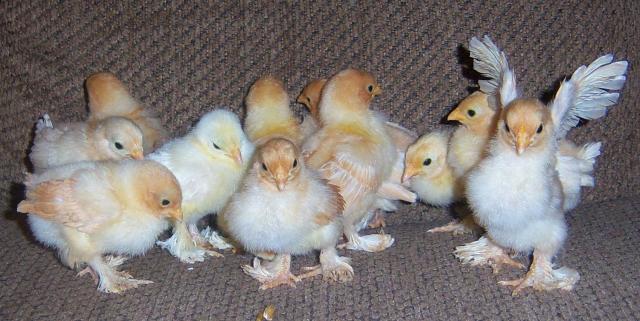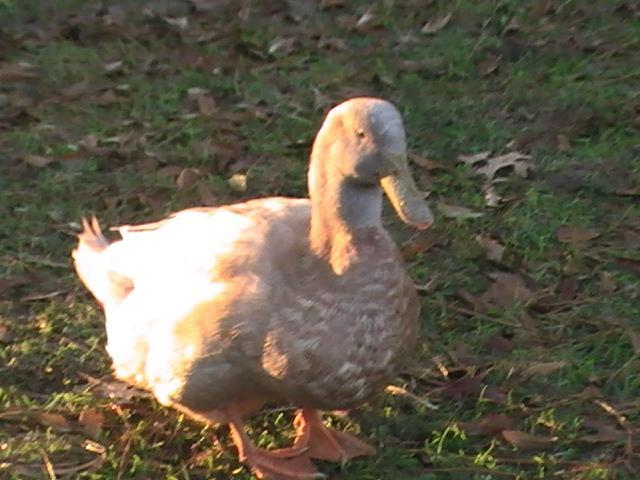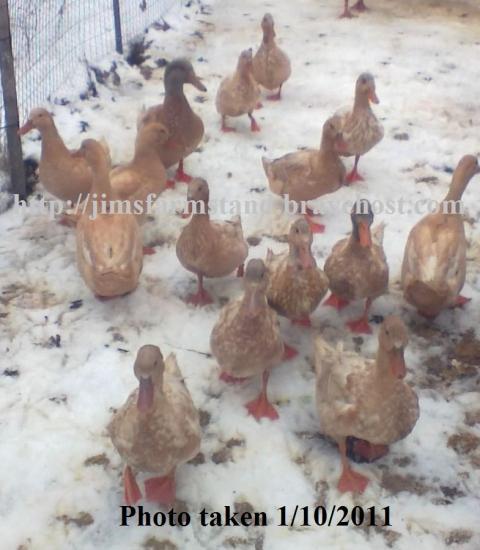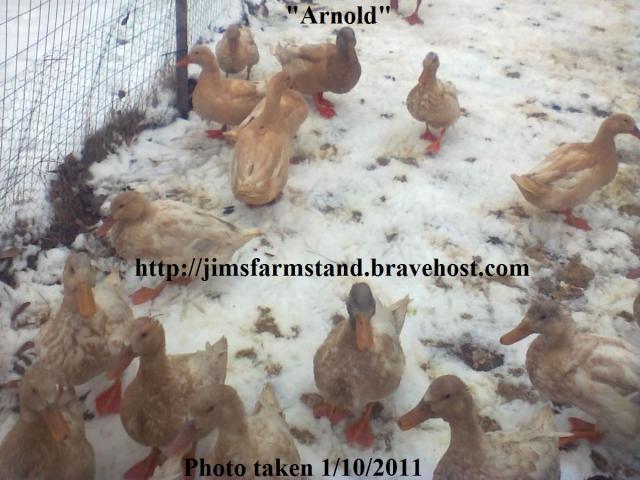Did you guys ever make a decision on the Blue Laced Red Wyandottes? I have a trio that I have not shown, but they are from Sterling Sue/Pauls/Foley lines. Would I be allowed to trade with them? I would really like to get some of the SLW to put with my Cottage Hill rooster. Right now I just have hatchery girls with him.
Navigation
Install the app
How to install the app on iOS
Follow along with the video below to see how to install our site as a web app on your home screen.
Note: This feature may not be available in some browsers.
More options
You are using an out of date browser. It may not display this or other websites correctly.
You should upgrade or use an alternative browser.
You should upgrade or use an alternative browser.
SQ Egg Swap
- Thread starter Sebrightmom
- Start date
- Status
- Not open for further replies.
mine Silver Laced Wyandotte
Offer 6 BBS silkie eggs


Last edited:
Quote:
I don't know why that wouldn't work since your line is from quality breeders (not hatchery) and have the potential to throw SQ birds. I don't own BLRWs, but I've seen the Foley birds in person.

I haven't shown any of my birds yet either, but that doesn't mean I'm not serious about finding good stock and breeding true with my birds.
I don't know why that wouldn't work since your line is from quality breeders (not hatchery) and have the potential to throw SQ birds. I don't own BLRWs, but I've seen the Foley birds in person.

I haven't shown any of my birds yet either, but that doesn't mean I'm not serious about finding good stock and breeding true with my birds.
silkies mine
offer: gold neck booted bantams



foot feathering is normally much better, they go 2" or more, as a cockerel he did BB, and for the d'Uccle & Booted Bantam club got Meet Reserve Champion at the WI international
offer: gold neck booted bantams



foot feathering is normally much better, they go 2" or more, as a cockerel he did BB, and for the d'Uccle & Booted Bantam club got Meet Reserve Champion at the WI international
Last edited:
mine
I offer 6+ from my BLRW
I have shown a few of my hens Both got BV out two different shows. One went againsit 4 other hens at the Newnan Show
Or I can Offer 6+ SQ Black Cauygas
I offer 6+ from my BLRW
I have shown a few of my hens Both got BV out two different shows. One went againsit 4 other hens at the Newnan Show
Or I can Offer 6+ SQ Black Cauygas
Last edited:
Mine!
The BLRW for a friend!
 (Juliechick get your bator ready!)
(Juliechick get your bator ready!)
Offer 6 Buff Duck eggs!
We have won Best of Breed and Reserve Champion Waterfowl at APA Sanctioned shows!



The BLRW for a friend!

Offer 6 Buff Duck eggs!
We have won Best of Breed and Reserve Champion Waterfowl at APA Sanctioned shows!



From the http://www.albc-usa.org/cpl/waterfowl/buffduck.html
Buff Duck
William Cook, the famous poultry breeder from Orpington, Kent, blended Cayuga, Runner, Aylesbury, and Rouen ducks to create a buff colored duck that would allow him to cash in on the early 20th century English fad for buff-colored plumage. This first duck was called a Buff Orpington and Cook went on to develop Blue, Black and Chocolate Orpington versions that had white bibs on their chests. Cook introduced his Buff Orpington to the United States in 1908 at the Madison Square Garden Show in New York City. In 1914, this breed was admitted into the American Standard of Perfection under the name "Buff," which is unusual since in no other instance is a color used as a breed name. (Holderread, 60)
The Buff is a medium-weight duck of 7 to 8 lbs. It is a long, broad bird with an oval head, medium length bill, and long, gracefully curved neck. The Buff duck's body carriage is twenty degrees above horizontal, its wings are short and it has a small, well-curled tail. Both the duck and drake have buff plumage, orange-yellow shanks and feet, and brown eyes. The drake's bill is yellow while the duck's bill is brown-orange. (Malone et. al., 313) A Blue variety of Orpington duck existed in the Americas, but it appears these were absorbed into the Blue Swedish breed. (Holderread, 60)
The Buff has much to offer the breeder who is looking for an attractive, dual-purpose bird. It is a good layer, typically laying about 150-220 eggs per year, and it gains weight relatively rapidly, making it ready for market within 8-10 weeks. (Batty, 108) Many consider the Buff a good meat bird that dresses out well because its light pin feathers do not show on the plucked carcass. Despite this, Buff numbers languished when industry growers followed consumer interest in cheap meat and focused attention on the faster growing Pekin even though many believe it to be less tasty. (Holderread, 60)
When choosing breeders, select robust, active, strong-legged birds with a good laying history. Avoid birds that are significantly under Standard weight and have bills with excessively concave top lines. Full-sized birds with straight bills attached high on the head make valuable breeders. Select against any non-buff plumage for show-birds. Select for white pin feathers for production birds.
ALBC's 2000 census of domestic waterfowl in North America found 793 breeding Buff ducks. Eleven people reported breeding Buff, and there are five primary breeding flocks with 50 or more breeding birds currently in existence. (Bender, 4) Consider this rare, beautiful bird for a lovely and useful addition to your flock.
Status: Threatened.
Bibliography:
Batty, J. Domesticated Ducks and Geese. Liss, England: Nimrod Book Services, 1985.
Bender, Marjorie E. F. D. Phillip Sponenberg, and Donald Bixby. Taking Stock of Waterfowl: The Results of the American Livestock Breeds Conservancy's Domestic Duck and Goose Census. Pittsboro, NC: The American Livestock Breeds Conservancy, 2000.
Holderread, Dave. Storey's Guide to Raising Ducks. Pownal, VT: Storey Communications, Inc., 2001.
Malone, Pat; and Gerald Donnelly, and Walt Leonard. The American Standard of Perfection. Mendon, MA: American Poultry Association, 1998.
Buff Duck
William Cook, the famous poultry breeder from Orpington, Kent, blended Cayuga, Runner, Aylesbury, and Rouen ducks to create a buff colored duck that would allow him to cash in on the early 20th century English fad for buff-colored plumage. This first duck was called a Buff Orpington and Cook went on to develop Blue, Black and Chocolate Orpington versions that had white bibs on their chests. Cook introduced his Buff Orpington to the United States in 1908 at the Madison Square Garden Show in New York City. In 1914, this breed was admitted into the American Standard of Perfection under the name "Buff," which is unusual since in no other instance is a color used as a breed name. (Holderread, 60)
The Buff is a medium-weight duck of 7 to 8 lbs. It is a long, broad bird with an oval head, medium length bill, and long, gracefully curved neck. The Buff duck's body carriage is twenty degrees above horizontal, its wings are short and it has a small, well-curled tail. Both the duck and drake have buff plumage, orange-yellow shanks and feet, and brown eyes. The drake's bill is yellow while the duck's bill is brown-orange. (Malone et. al., 313) A Blue variety of Orpington duck existed in the Americas, but it appears these were absorbed into the Blue Swedish breed. (Holderread, 60)
The Buff has much to offer the breeder who is looking for an attractive, dual-purpose bird. It is a good layer, typically laying about 150-220 eggs per year, and it gains weight relatively rapidly, making it ready for market within 8-10 weeks. (Batty, 108) Many consider the Buff a good meat bird that dresses out well because its light pin feathers do not show on the plucked carcass. Despite this, Buff numbers languished when industry growers followed consumer interest in cheap meat and focused attention on the faster growing Pekin even though many believe it to be less tasty. (Holderread, 60)
When choosing breeders, select robust, active, strong-legged birds with a good laying history. Avoid birds that are significantly under Standard weight and have bills with excessively concave top lines. Full-sized birds with straight bills attached high on the head make valuable breeders. Select against any non-buff plumage for show-birds. Select for white pin feathers for production birds.
ALBC's 2000 census of domestic waterfowl in North America found 793 breeding Buff ducks. Eleven people reported breeding Buff, and there are five primary breeding flocks with 50 or more breeding birds currently in existence. (Bender, 4) Consider this rare, beautiful bird for a lovely and useful addition to your flock.
Status: Threatened.
Bibliography:
Batty, J. Domesticated Ducks and Geese. Liss, England: Nimrod Book Services, 1985.
Bender, Marjorie E. F. D. Phillip Sponenberg, and Donald Bixby. Taking Stock of Waterfowl: The Results of the American Livestock Breeds Conservancy's Domestic Duck and Goose Census. Pittsboro, NC: The American Livestock Breeds Conservancy, 2000.
Holderread, Dave. Storey's Guide to Raising Ducks. Pownal, VT: Storey Communications, Inc., 2001.
Malone, Pat; and Gerald Donnelly, and Walt Leonard. The American Standard of Perfection. Mendon, MA: American Poultry Association, 1998.
Last edited:
UGH!!! Missed the silkies and SLW!!!


Quote:


Those ducks are cute! But, alas, I have NO more room for ducks.
- Status
- Not open for further replies.
New posts New threads Active threads
-
Latest posts
-
-
-
Open Contest BYC Pets & Livestock Caption Contest 12-05-25 Pic by ChicksnMore
- Latest: CurlyChickenGirly
-
-
-
Latest threads
-
-
Mystery illness 2 years old Wyandotte Hen
- Started by SkyAJK
- Replies: 0
-
-
-
-
-
Threads with more replies in the last 15 days
-
-
-
-
Chicken Butt Emergency ‼️ Please Help!
- Started by urlocalcrazychickenlady
- Replies: 71
-
Ended BYC Poultry Caption Contest 11-28-25 Pic by Ponypoor
- Started by TwoCrows
- Replies: 62
-
×

